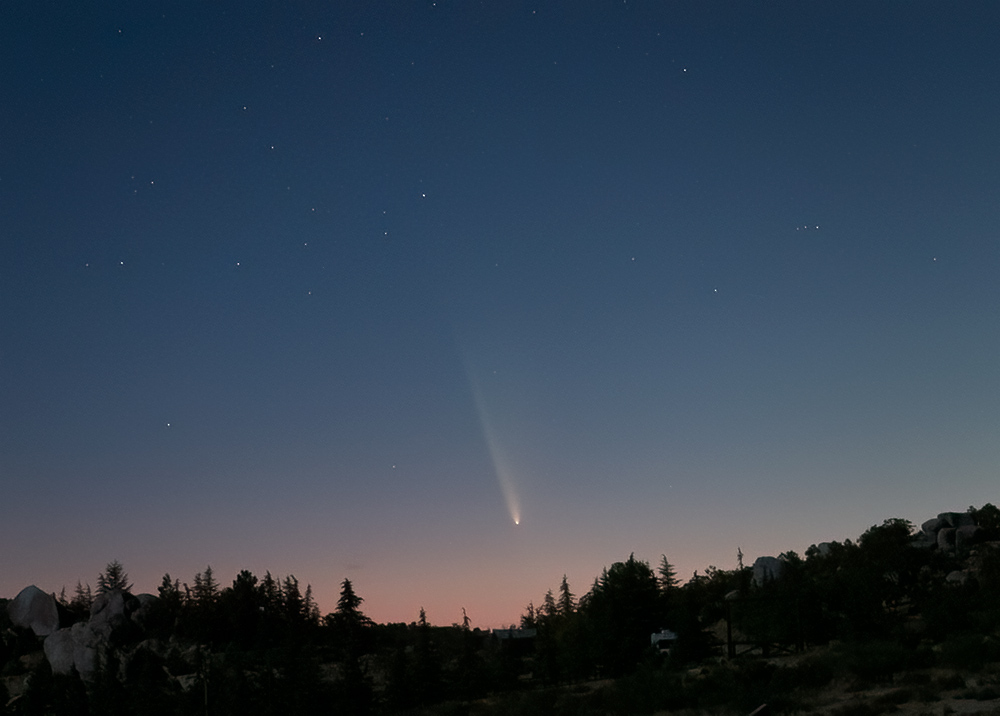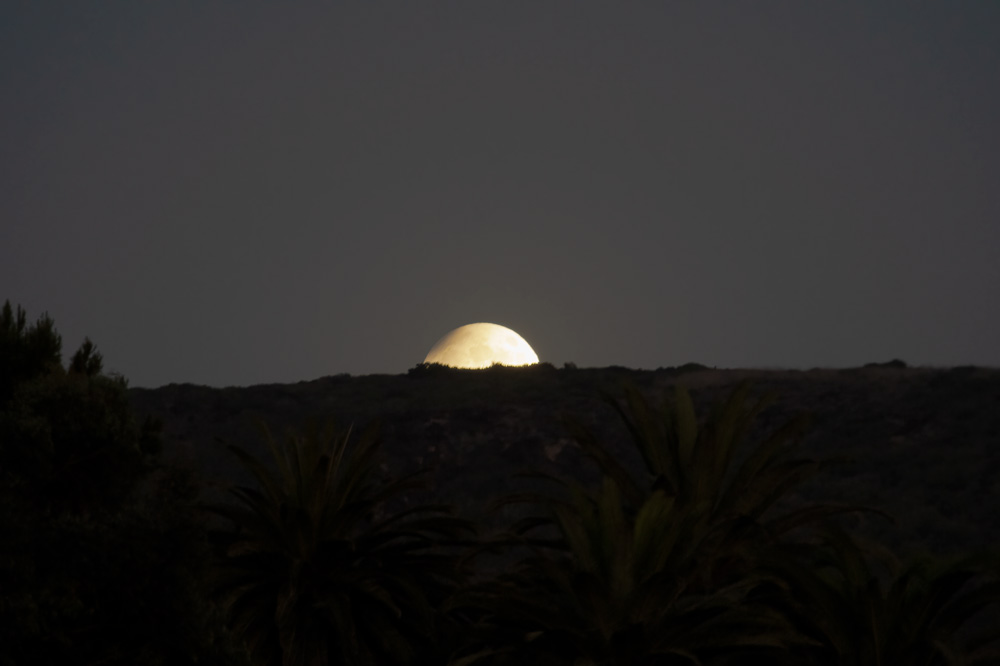 |
| Jupiter 2024-11-10 08:41.5 UTC |
 |
| Saturn and a few moons 2024-11-10 07:09 UTC |
Imaging details:
East Bluff, CA
stacked in autostakkert (upsampled 3x)
combined in winjupos
processed in registax and photoshop
 |
| Jupiter 2024-11-10 08:41.5 UTC |
 |
| Saturn and a few moons 2024-11-10 07:09 UTC |
enjoy
 |
| Saturn 10/21/24 06:07 UTC |
Stacked my comet images to see if i could pull out the anti-tail...no luck :( though you can see a bit more of the tail, especially to the right compared to the single frames.
 |
| comet C2023 A3 Tsuchinshan–ATLAS 10/12/2024 7:23 - 7:30 PM Local average of 119 images |
 |
| comet C2023 A3 Tsuchinshan–ATLAS 10/12/2024 7:29 PM Local Anza football field |
 |
| comet C2023 A3 Tsuchinshan–ATLAS 10/12/2024 7:30 PM Local Anza |
 |
| Star Trails 10/10/2024 |
 |
| comet C2023 A3 Tsuchinshan–ATLAS 10/12/2024 7:24 PM Local |
Went out to anza saturday to catch the comet. as the beautiful pink of sunset faded, i was worried it was going to be a bust, but at 7 pm (40 minutes after sunset) i caught a faint glimpse. it continued to improve over the next 20 minutes then gradually faded as it set. i could see a vertical streak visually, only slightly better with averted vision. 7x50 binoculars showed a bright nucleus with a large slightly fan shaped tail, close to the photo above. 15x50 IS binoculars gave a bit better view of the core, but the field felt too small.
Here’s a partially eclipsed supermoon rising on the evening of 9/17/24. I happen to have 8 PM dinner reservations at beachcombers, so I headed down to a section of crystal cove with a nice view to the east a bit early to catch it.
 |
| Partially eclipsed supermoon 9/17/24 7:17 PM |
As a bonus, i caught a green flash at sunset (confirmed by 4 others), first i've ever seen from California. sadly no pics. I will note that as the sun was setting it seemed to be melting into the water at the bottom, suggesting the highly refractive conditions necessary for a green flash.
a few more shots:
 |
| Partially eclipsed supermoon 9/17/24 7:19 PM |
 |
| Partially eclipsed supermoon 9/17/24 7:19 PM |
attempted a few composites combining long and short exposures:
 |
| Partially eclipsed supermoon composite of long and short exposures 9/17/24 7:22 PM |
 |
| Partially eclipsed supermoon composite of long and short exposures complete with crystal cove sign 9/17/24 7:24 PM |
 |
| 1/2 sec @f/9 ISO 1250 155 mm |
 |
| 1/2 sec @f/9 ISO 1250 55 mm |
 |
| 30 sec video capture 1/1000 sec ISO 3200 30 fps @ 300 mm stacked in autostakkert, sharpened in registax |
Last weekend (Sept 1st 2024) there was a large coronal mass ejection / flare off of the rim of the sun, followed by post flare loops that lasted for hours. missed the flare, but caught the loops.
 |
| Solar Prominence 2024 09 01 20:06 UTC |
 |
| Solar Prominence 2024 09 01 19:59 - 20:10 UTC |
A few minutes on the little guy
 |
| Solar Prominence 2024 09 01 |
 |
| Solar Prominence 2024 09 01 19:59 - 20:10 UTC |
 |
| Solar Prominence 2024 09 01 19:59 - 20:10 UTC manual alignment and de-rotation |
 |
| Loop the loop |
Equuleus (Latin for little horse) is a faint constellation near pegasus (hence the horse theme) rising in the east these nights.
 |
| Constellation Equuleus "little horse" horse's head only |
According to Einstein's theory of relativity, the speed of light is the same for all observers. consider a spaceship moving away from the sun at half the speed of light. light from the sun speeds by us at the speed of light and then speeds by the ship at the speed of light. shouldn't it be half the speed of light relative to the ship?
Speed = distance/time. so the solution is that time slows down on the ship relative to us, keeping the speed of light constant.
Consider a photon leaving Delta Equulei 60 years ago. Some of us have experienced 60 years waiting for its arrival tonight. But the photon, traveling at the speed of light experienced no time at all.
Something to think about on this day as time flies by.
The sun was littered with sunspots this weekend leading some to claim we've reached the maximum of Solar Cycle 25.
 |
| Sun full disk 8/9/2024 00:05 UTC Ha Filter "detuned" to continuum. |
 |
| Sun mosaic 8/9/2024 WL reduced to 33pct |
Here's a close up of the largest group, AR 3780 a few days later. The earth is about the size of the dark circle to the left.
 |
| AR 3780 8/10/2024 23:08 UTC |
 |
| Sun full disk 8/9/2024 00:05 UTC Ha Filter "detuned" to continuum colorized |
 |
| sun continuum v Ha 8/9/2024 00:00.1 UTC 80 pct |
 |
| Sun full disk Ha exclusion (central portion inverted) 8/9/2024 00:00.1 UTC |
 |
during totality, there is a twilight horizon for 360 degrees. it's not pitch black, but approximates the darkness an hour after sunset. you can still see things, though the colors are muted.
 |
| twilight horizon during totality 13:52:11 local, max eclipse russellville arkansas |
 |
| pin hole projection of partially eclipsed sun right edge (parallel to crescent) sharp bottom edge (perpendicular to crescent) fuzzy 1:41 PM, 11 minutes before totality |
 |
| pinhole projection of partially eclipsed sun through ritz cracker onto sky chart (click image for full size) |
 |
| pinhole projection through pizza box courtesy of neighboring family (click image for full size) |
 |
| eclipse neighbors ritz crackers in hand (click image for full size) |
At first, i didn't think the cows did much, but on review of my pictures over the course of the day, it appears as though they started over to the left, perhaps by a barn or something, then moved out to the field to graze, later moving into the shade of trees during the midday sun. during thinning crescent phases as the daylight faded and reddened, they seemed to move back to the left...maybe just random.
 |
| moo |
i'm definitely not a cloud expert
the nature of cloud formation during a total eclipse gets fairly complex. not sure i noticed any eclipse specific clouds, other than the thin line going right across the sun during totality :(
but i did notice an unusual difference after totality. the sun moved across the sky from left to right. the "pre-eclipse" clouds to the right look like typical poofy things, while the "post-eclipse" clouds to the left have a linear pattern. This article suggests low level cumulus clouds dissipate during an eclipse due to altered convection, while thin high level clouds persist.
 |
| panorama 40 minutes after totality |
 |
| Thin cloud passing right in front of eclipsed sun. Russellville, Arkansas 4/8/2024 also note Venus (right) and Jupiter (left) |
 |
| weather satellite view of the eclipse shadow from pivotal weather.com |